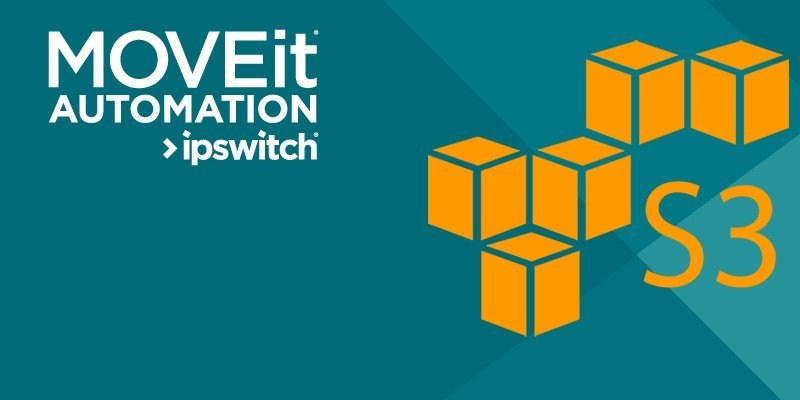We're excited to announce that MOVEit Automation can now access Amazon S3 (Simple Storage Service) buckets as native hosts!
Amazon’s S3 (Simple Storage Service) buckets give you a ton of flexibility when it comes to storing your valuable data in the cloud. They can also be accessed directly from within MOVEit Automation as native hosts which enhances them with the industry’s leading file transfer capabilities.
S3 Automation Using MOVEit
MOVEit Automation allows the use of cloud storage as either the source or destination for transfers authenticated via AWS keys. Users can copy files to or from any S3 bucket that is connected to their AWS account easily and securely. You get the security, auditability and automation of MOVEit with the scalability, accessibility and flexibility of Amazon’s S3 storage. It’s a win-win!
In the video below, Ipswitch Product Manager Jim Cashman demonstrates this capability and shows how to add files to an S3 bucket using MOVEit.
Want to know more? Download a free trial of MOVEit 2018 and try it for yourself!
Transcript:
Hello. I'm Jim Cashman, a product manager here at Ipswitch. I want to show you a great new feature in MOVEit Automation, which is the ability to interface MOVEit Automation to Amazon's S3 storage service.
You can use it as a host, a native host in Automation. This will allow you to create tasks that either move files from Automation to the S3 location, or from S3 to Automation.
Now, what I'm going to show you here to show you that it works, is first, I'm going to log in to my Amazon account, showing you my storage buckets. In Amazon, if you don't know, they store files in buckets, which are very similar to Windows file shares.
So let's take a look. Here, I'm logged in to my Amazon account, Amazon S3, and here are some buckets that I've created under my own account. This bucket here is in Northern California. I want to show you here that it's empty.
So now, let's switch over to Automation and show you how you interface with Amazon S3. What we'll do here is add a host. Now you see that Amazon S3 is a native host type. Let's give it a name, an access key, and a secret key, and look here, we're into Amazon. It sees those buckets that I showed you on the previous screen.
Let's pick my Northern California bucket. We test. It says OK. We can connect, and here we see a native host.
So now let's go create a task that can use this bucket. We'll add a source from the local hard drive, just as a test. Here are some files that we're going to move. Now, we're going to add the destination, which will be that S3 host that we created in the first step.
And now, let's run the task. It says it's finished. It shows me how many files we moved, and how much megabytes we moved. And now, let's go back to my Amazon console. And there we have the files.
I hope you realize how important this new feature is in Automation. This allows you to integrate Automation with the Amazon S3 service very quickly, in 5 minutes or less. This will allow you to create tasks that interface with this worldwide storage network.
